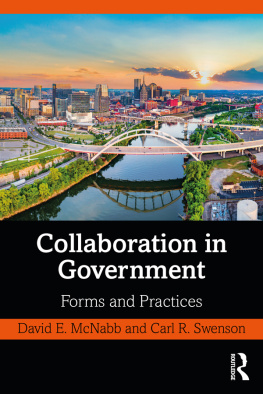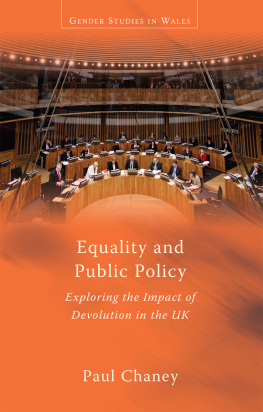First published in Great Britain in 2012 by
The Policy Press
University of Bristol
Fourth Floor
Beacon House
Queens Road
Bristol BS8 1QU
UK
t: +44 (0)117 331 4054
f: +44 (0)117 331 4093
tpp-info@bristol.ac.uk
www.policypress.co.uk
North American office:
The Policy Press
c/o The University of Chicago Press
1427 East 60th Street
Chicago, IL 60637, USA
t: +1 773 702 7700
f: +1 773-702-9756
sales@press.uchicago.edu
www.press.uchicago.edu
The Policy Press 2012
British Library Cataloguing in Publication Data
A catalogue record for this book is available from the British Library.
Library of Congress Cataloging-in-Publication Data
A catalog record for this book has been requested.
ISBN 978 1 84742 847 9 paperback
ISBN 978 1 44730 030 4 hardcover
The right of Paul Williams to be identified as author of this work has been asserted by him in accordance with the Copyright, Designs and Patents Act 1988.
All rights reserved: no part of this publication may be reproduced, stored in a retrieval system, or transmitted in any form or by any means, electronic, mechanical, photocopying, recording, or otherwise without the prior permission of The Policy Press.
The statements and opinions contained within this publication are solely those of the author and not of the University of Bristol or The Policy Press. The University of Bristol and The Policy Press disclaim responsibility for any injury to persons or property resulting from any material published in this publication.
The Policy Press works to counter discrimination on grounds of gender, race, disability, age and sexuality.
Cover design by The Policy Press.
Front cover: image kindly supplied by istock.com
Printed and bound in Great Britain by TJ International, Padstow.
The Policy Press uses environmentally responsible print partners.
Readers Guide
This book has been optimised for PDA.
Tables may have been presented to accommodate this devices limitations or/and use scroll function for a complete review of the tables as and where needed.
Image presentation is limited by this devices limitations.
Contents
List of tables, figures and boxes
Tables
Figures
Boxes
About the author
Dr Paul Williams is Reader in Public Management and Collaboration at the School of Management, Cardiff Metropolitan University. He combines an extensive career of working as a public sector manager in Welsh local government for over 20 years, with academic experience as a researcher, lecturer and consultant in public policy and management. He has undertaken research for a wide range of agencies at local and national government levels in Wales on topics such as equality, sustainable development, community strategies, the role of elected members and collaborative working. He has a record of publications in these policy areas and his research interests are predominantly focused on integration between health and social care, leadership for collaboration and the role of individual agents in the collaborative process.
Acknowledgements
This book is the product of my sustained research interest in collaborative working over the last decade. During this time I have been involved in a number of research studies in different policy fields, predominantly in Wales, the fieldwork for which has brought me into contact with numerous people from different sectors practitioners, managers, directors, professionals, politicians, community representatives and others. These have found time in busy schedules to engage with me in detailed conversations about collaboration in general and boundary spanning in particular. I am extremely grateful to all of them for their time and insights.
I have been influenced by the work of many academics during the preparation of this book, none more so than Professor Helen Sullivan with whom I have collaborated on many research studies, and who has always been a critical and valued friend.
Finally, this book is dedicated to my wife and daughter Jan and Sophie. Jan has been incredibly supportive and inspirational during my academic career, encouraging me to strive to high standards, and along the way providing valuable contributions drawn from her long experience of senior management in the NHS. I am equally proud of Sophie who has already demonstrated her proficiency as a high academic achiever. My love and thanks to them both.
ONE
Introduction
This book concerns a particular set of individual actors who work within theatres of collaboration settings that involve agencies uniting to design and deliver public services both within and between sectors. These individual actors are referred to as boundary spanners because they engage in boundary spanning activities that cross, weave and permeate many traditional boundary types, including organisational, sectoral, professional and policy.
Collaboration in the UK has proliferated across all areas of public policy, particularly in response to the interconnected and complex nature of policy issues. As Luke (1998, p 5) observes: in the last twenty years, a quiet crystallization of interdependencies has set in that has changed the way we engage in public action. We are now tied into multiple webs of interconnections never before witnessed in human history. As a consequence, the breadth and depth of collaboration has expanded over the last decade, and has emerged as an integral component of the design and delivery of public services. New forms of governance and management arrangements have developed which challenge existing practices and demand different skills and capacities. The success of this model of public policy is critical to the quality of life for many service users and citizens who are often disadvantaged by a lack of coordination and duplication between service providers in dealing with their complex and interrelated needs. Forms of collaboration are central to the efficiency and effectiveness of scarce public resources, particularly during periods of unprecedented financial restraint. This book, therefore, has been written at an opportune time where the imperatives of collaboration are being experienced across the range of public policy and practice, and insights and lessons contained within the book will hopefully inform the practical design of collaborative solutions.
Policy makers and practitioners are eager to search for what works in a dynamic policy field replete with complexity, ambiguity and tension. While the broad thrust and benefits of collaboration are accepted, delivery in practice is highly problematic. Negotiating and enacting common purpose among multiple and diverse agencies with different cultures, management systems, accountabilities and purposes is complex, and understanding the structural and agential determinants of success is difficult to unravel. What limited robust evidence exists suggests that collaboration has not yielded its potential in many areas leading to frustration, conflict and an inefficient use of public resources.
Although this book is grounded primarily in a public sector context, perspectives from other sectors, particularly the private sector, are explored as a means of learning both to establish whether any useful practical lessons can be transferred between sectors, and also as an opportunity to interrogate the relevance of any theorising based on evidence from the private sector. The importance of intersectoral learning is particularly appropriate in contemporary public policy collaboration because of the involvement of agencies from different sectors and the increasingly blurred and shifting boundaries between them. While public and private contexts can be viewed as fundamentally different in terms of purposes, value base and accountabilities, the motivations to collaborate are often similar, and the consequent governance and management challenges faced stemming from differences in culture, style and strategic purpose are common to both sectors. But care is needed when drawing direct comparisons between sectors because of the strength of contrasting contextual and structural factors.



















